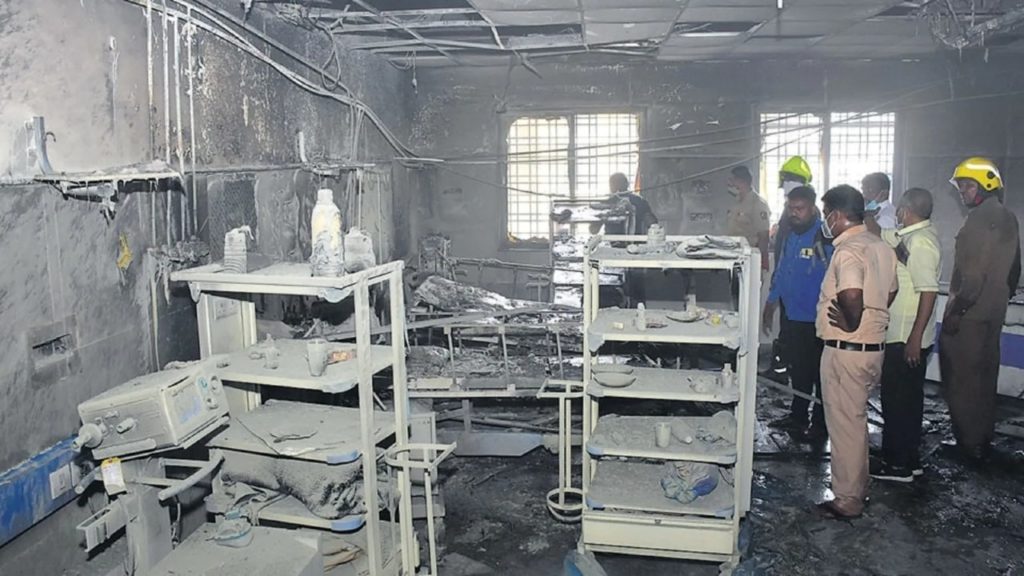COVID-19 hospital fires have killed scores of people

Fire incidents, especially in COVID-19 hospitals, over the last 15 months have killed more than 120 people, the reasons ranging from overuse of electricity-run equipment and of power capacities to lack of time for adding to fire-fighting capability.
The last 15 months saw the deaths of more than 120 people in fire incidents in 25 hospitals, including one in Ahmednagar on November 6 in which 11 people were killed and another in Bhopal just two days later in which four infants died.
The most number were killed in Maharashtra—55 people in seven incidents, followed by Gujarat, where 35 people died due to hospital fires.
However, it is important to note that most of them were killed in COVID-19 hospitals, and the link that has been made out between rising hospital fires and the burden of COVID-19 cases, by both hospital administrators and forensic analyses, is not artificial.
With the huge number of cases in the first and second waves of the pandemic, demand far exceeded capacity. As a result, hospitals had to expand their facilities very quickly, but with scarcely any time for expansion of infrastructure.
While beds and mattresses could be marshalled at short notice, and oxygen cylinders and piped oxygen supply too, though often with herculean effort, hospitals could not add extra power lines, or distribute the load with additional transformers or power units. Single air-conditioner units were often running 24-by-7 and so were ventilators.
The high power requirement naturally pressed existing infrastructure into overdrive. These resulted in electrical short circuits.
The short circuits were also possibly aided by the presence of flammable substances—alcohol-based sanitisers, high oxygen and PPE (personal protection equipment) kits; sparks grew into full-scale fires.
The expansion of infrastructure on an emergency basis also left no time to shore up fire safety requirements.
The requirements of COVID-19 treatment also meant adding beds to intensive care units (ICUs), as patients often arrived in a serious condition. Now, ICUs are often windowless rooms as they need to be completely germ-free. But this very feature also meant that when a fire started, neither were there no windows to open but also a possible exit route was not available.
Therefore, it is essential for hospitals, especially those that did a yeoman service by treating hundreds of thousands of COVID-19 patients, to do fire safety and electrical audits to ensure operational fitness. After all, a healing zone can never be allowed to become a death zone.







